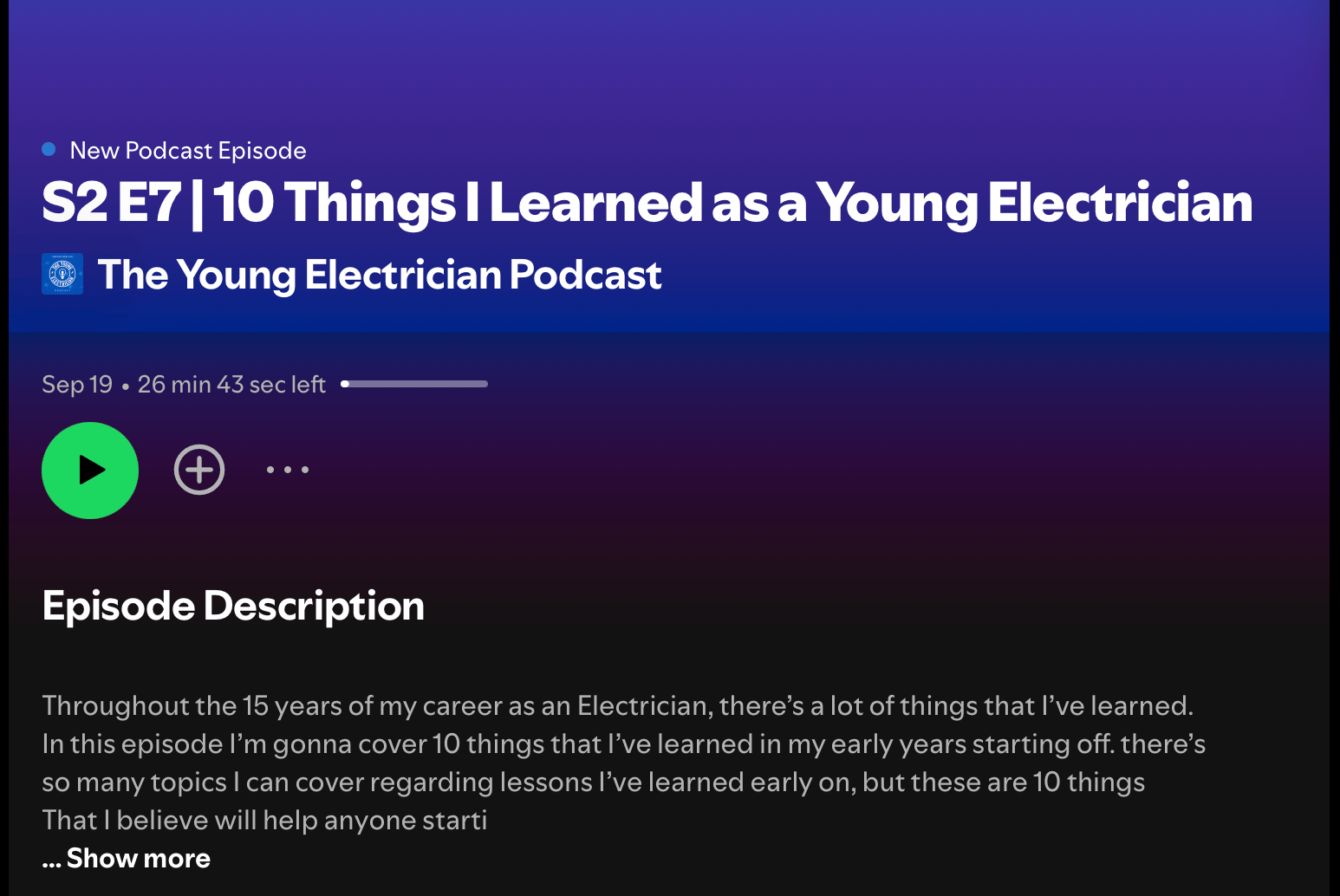Cheers!
Welcome to the premiere issue of Plug Into The NEC, your curated guide for bridging the gap between field work and the code book so you can be the kind of electrical professional that takes his or her craft to the next level. Each edition brings you valuable Industry Information, NEC Insights, Podcast highlights, and much more.
This week, we journey through
Highlights of the latest episode: 10 Things I Learned As A Young Electrician.
The NEC in a Nutshell.

Ruben Young
Feature Story
Highlights from this week’s Episode

This one’s for the new guys. (Might want to send this to your apprentice)
We could probably fill a couple of books with all of the advice we have to give to those starting in the trade. But we’re not here to write a book, so here’s my top 3 from this week’s episode:
Ask Questions. As a younger electrician who spent 11 months going to trade school at night while working during the day as a laborer, I was chomping at the bit to get started in the field. Because of this, I often found myself absolutely killing it at certain tasks and finishing way before my lead man expected… just to find out that the reason it seemed so easy was because I was doing it wrong. I learned the hard way why you should ask a lot of questions. You end up avoiding a lot of wasted time, energy, and company money. Don’t worry about your lead getting annoyed; it’s better for him to be annoyed and you complete the correct task than for you to give him a moment of peace just to ruin his day later when it becomes evident you didn’t understand the task.
Show up early, leave late. When you’re first starting out in the field, you have a lot on your plate to deal with. You don’t know where the porter johns are, and you’re not exactly sure if you need permission or not to use them. I’m joking a little, but I’m also serious. When you’re first starting out, you have a lot to catch up on. You need to learn things like: how to use a shovel, how to use a drill, install boxes, dig, memorize the names of different materials, trench, drill holes, run wire, do make-up, trim-out, and dig. just to name a few things. Most people are going to enter the trade sometime soon after high school. You probably don’t have a lot of responsibilities, so I’d recommend using that extra time to invest in your craft and your future, while other guys at your level are showing up right on time (or late) you’re the first person the boss see’s, you help unlock gang boxes and ladders and at the end of the day you’re helping lock everything up. Trust me, you’ll learn a lot and you’ll have the respect of your foreman and lead man. which goes a long way.
Volunteer for tasks that no one wants to do. You’re going to see that there are certain tasks (like digging) that a lot of people are going to try an avoid - volunteer for these tasks. I’ll give you a couple of reasons why you should: 1) you’ll learn a lot while doing those tasks, and if you know how to do them, then you’ll be able to lead in those areas later, and if you’re ever running a job, you’ll be more well-rounded because you took on these tasks. 2) People respect people who step up. If you earn the respect of your fellow electricians, even as an apprentice, they won’t want to give you the grunt work. Foremen and leads tend to want to give the harder work to the lazy guys that show no initiative in an effort to get them to step up. If you’re a team player, then they won’t be so quick to give you tasks that they wouldn’t want to do.
Feature Story
Lets Plug Into the NEC

Let’s Plug Back Into The NEC
The NEC in a nutshell
The NEC seems like a big book that’s easy to get lost in, but it’s actually not. Here’s a basic breakdown of the NEC:
Table of contents
Introduction (Article 90)
9 chapters
Annex
index
This is the basic framework that the NEC is built on. start here.
With the table of contents & the index, you can find everything sandwiched in the middle. After getting the basic framework down, I always suggest moving to the 9 chapters and doing a little exercise: take any journeyman prep question and try to guess which chapter it might be found in. When you find it, see if you guessed right. This simple exercise will help solidify what each of the chapters is and what might be found in each one.
Here’s a code book question: when installing conduit underground, the interior of the conduit is considered to be___?
a. dry
b. damp
c. wet
d. weather-resistant
Guess what chapter it’s in, then go find it, and see how you did. I’ll give my answer in the next Newsletter!
Thanks for reading this issue and being a part of Plug Back Into The NEC
NOTES FROM: PLUG INTO THE NEC
“The grass isn’t always greener on the other side, but sometimes someone will pay you more to cut it” - some wise guy

